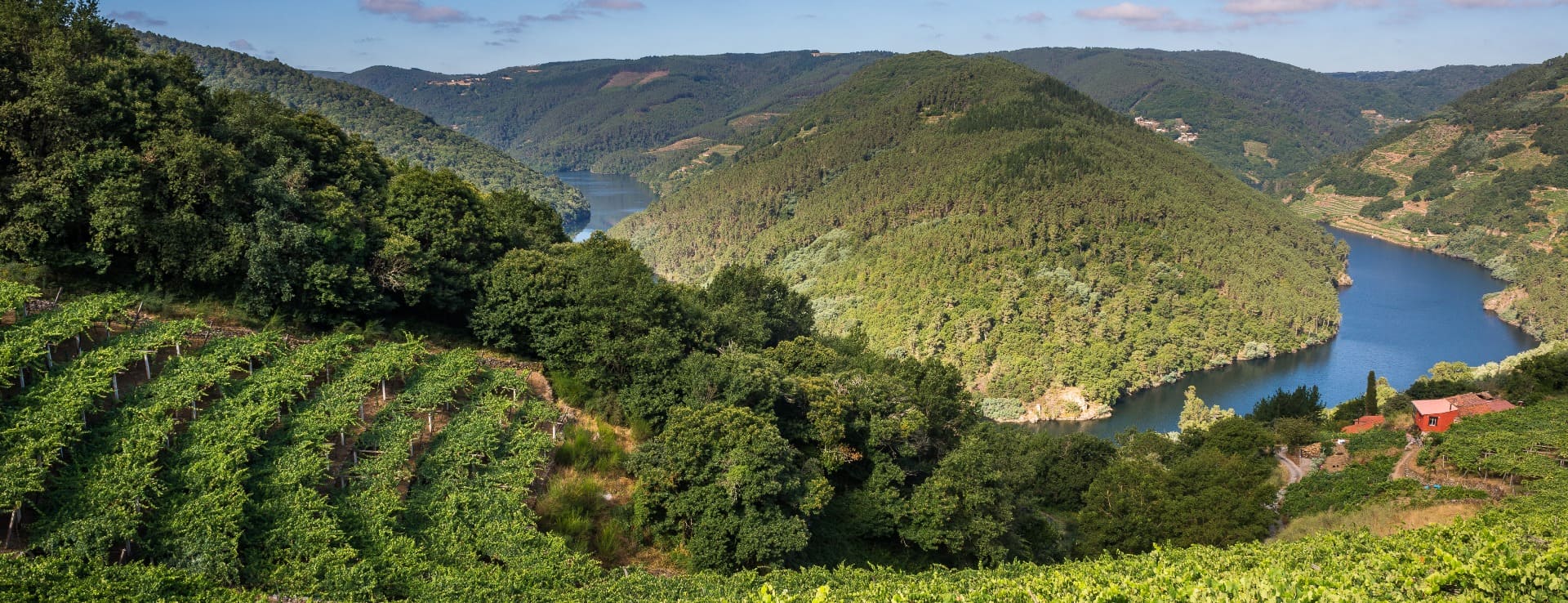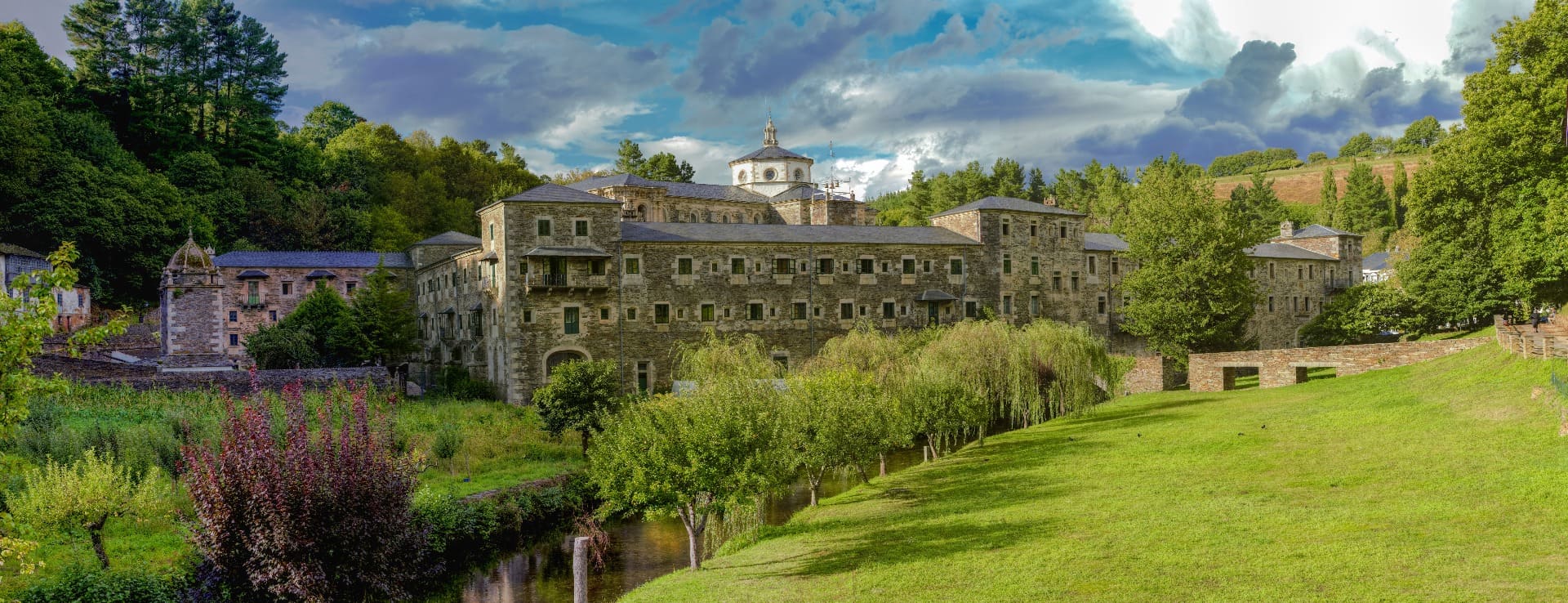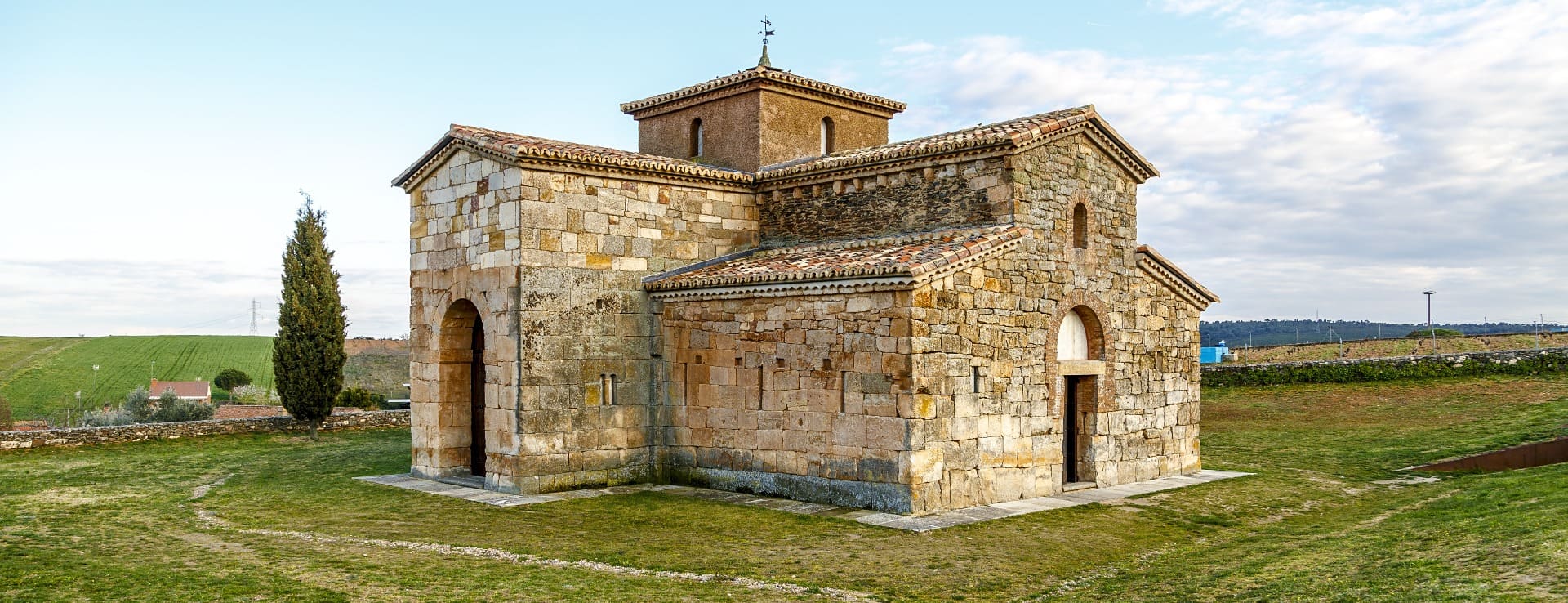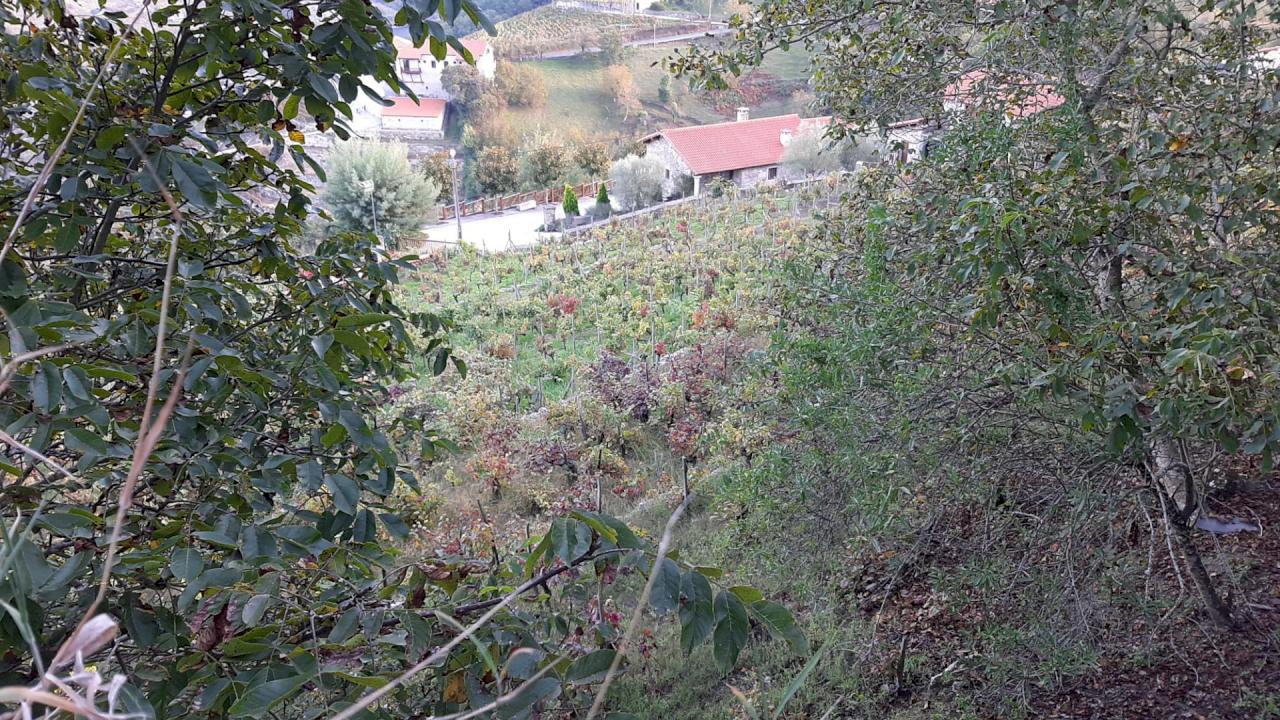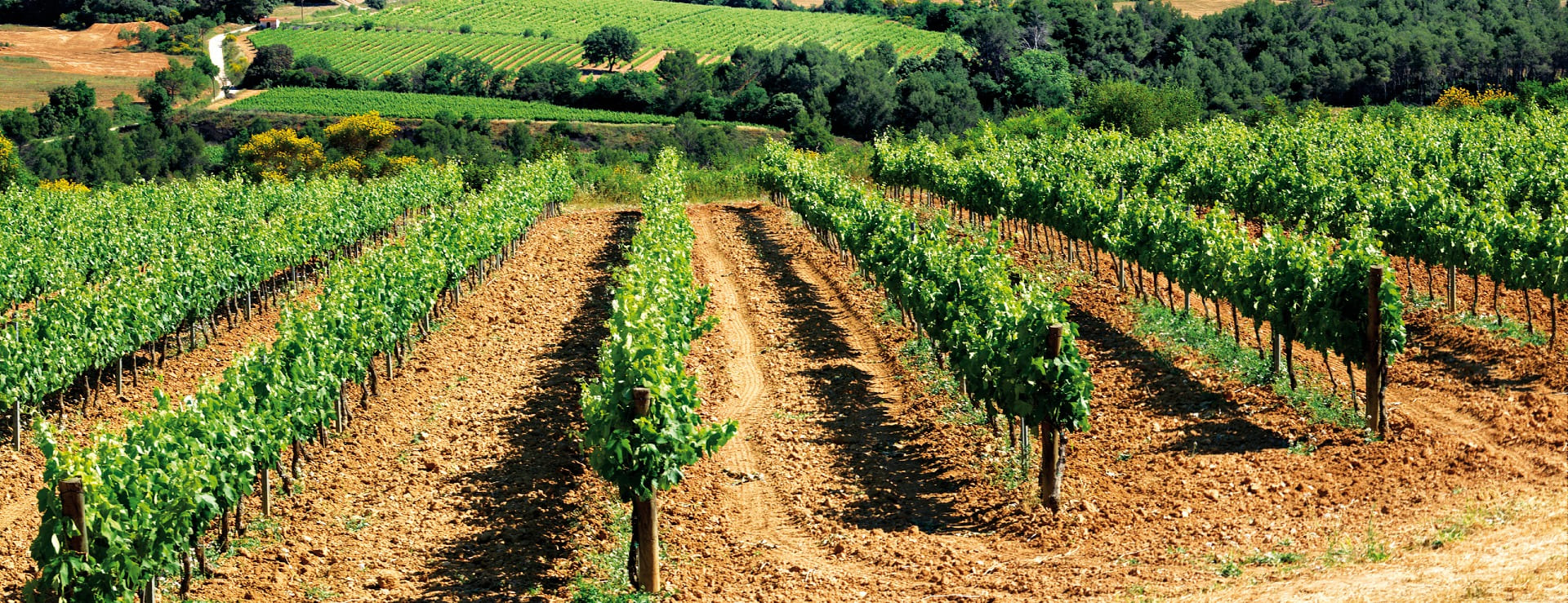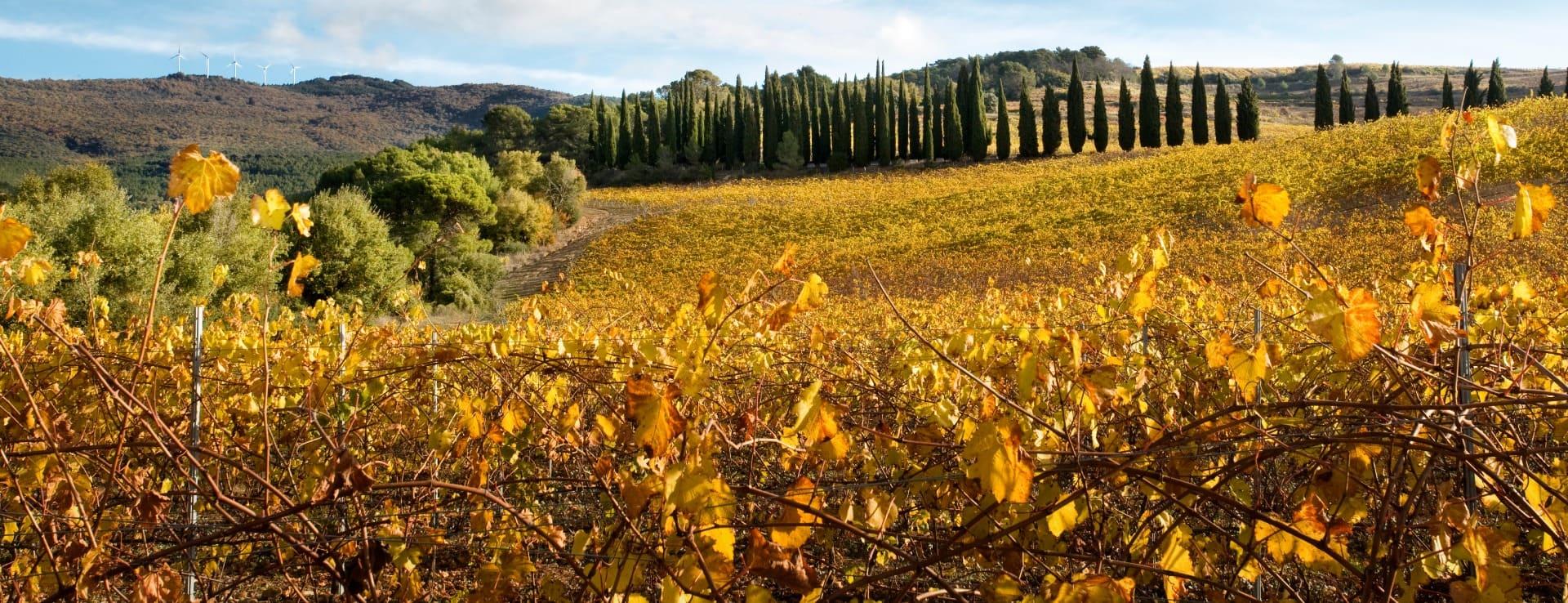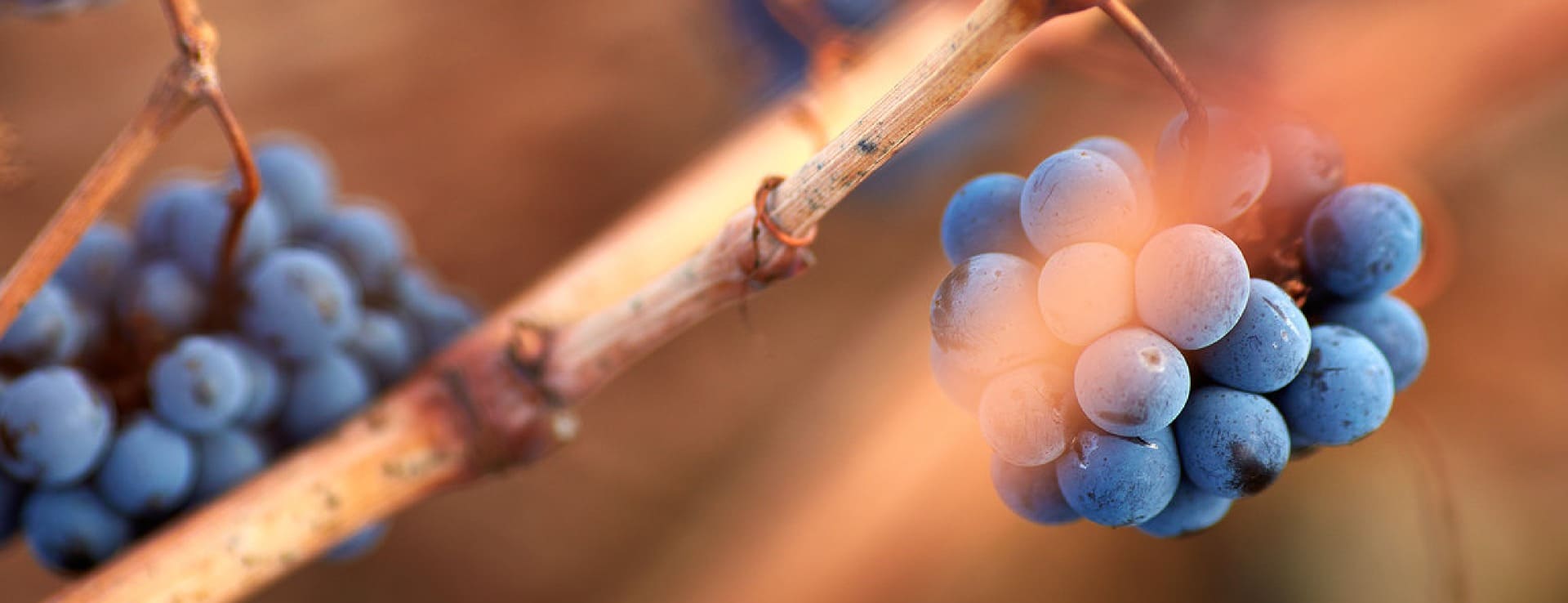Find your winery or vineyard
Infographic of the Denomination of Origin
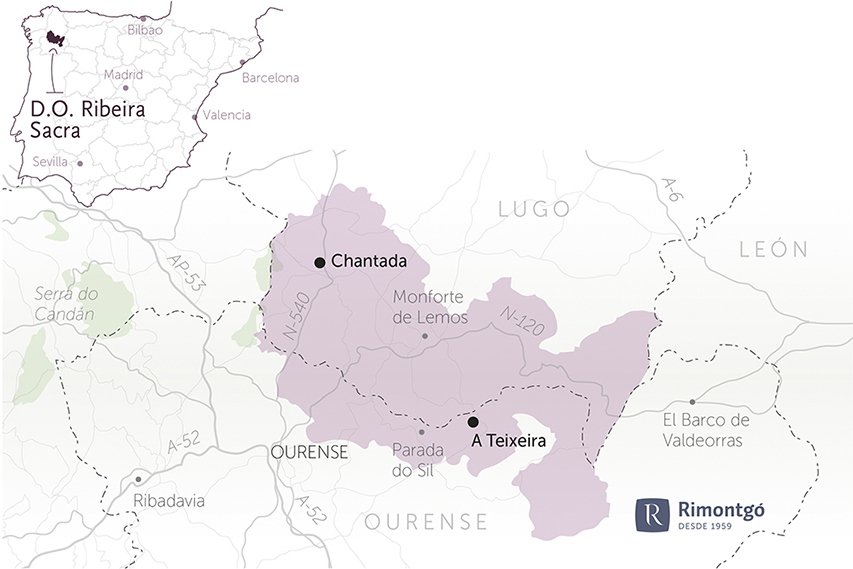
Change to imperial units (ft2, ac, °F)Change to international units (m2, h, °C)
D.O. year of foundation:
1996
Number of wineries (2017):
96
Total surface area:
1.270 ha3.138 ac
Maximum production allowed:
12.000 kg/ha10.706 lb/ac
Altitude of the vineyards:
Min: 700m
Max: 900m
Min: 2.297ft
Max: 2.953ft
Temperature:
Min: -3º
Max: 40º
Min: 27°F
Max: 104°F
Yearly hours of sun:
2.200
Yearly rainfall:
800 l/m274 l/ft2
Lugo
The province of Lugo is the largest of the four that make up Galicia the autonomy situated in the northwest of Spain. It borders the Cantabrian Sea to the north as well as the rest of the Galician provinces, the Principality of Asturias and the province of León. It is crossed by the river Minho, which serves as a borderline with Portugal, and arrives at the Atlantic.
HISTORY OF WINE
The slopes around the Minho river and its tributary, the Sil, already had a challenge with the Romans who cultivated the vine. Since then, the terrace system was applied in the area. Little by little, the lands were occupied by monasteries and shrines (many have been conserved today), and so from the 6th century, winemaking in Lugo took off and has been consolidated to what is known as today as Ribeira Sacra.
Shortly after, from the 7th century, religious constructions would become new monasteries in charge of major orders such as the Benedictine and Cistercians. They all contributed to improving vine cultivation in Lugo. As of today, new wine producing groups dominate the area, preserving the best classical techniques.
WINES AND WINERIES
The wineries of Lugo form part of the Designation of Origin Ribeira Sacra. To highlight some, Bodegas Guímaro, Bodegas Algueira, Adegas Moure, Adegas Laureu, Adegas Garoña, Bodegas Soutelo, Bodegas Rectoral de Amandi, Bodegas Sta María de Nogueira, Bodegas Regina Viarum, Bodegas Rosen do Sil, Bodegas Val de Quiroga, Finca Míllara, Bodegas Casa Moreiras and Bodegas Amedo.
POINTS OF INTEREST
Although the color green is an identifying element of Galicia, Lugo’s landscape shows a great contrast between the mountain areas and the beautiful coasts. Inland, the Reserva de la Biosfera de Terras do Miño is found. The province forms part of the Camino de Santiago, with many Roman churches scattered along the route. The Roman Walls of Lugo is declared a National Heritage Site by UNESCO. Seafood is the protagonist all around Galicia, but also polbo á feira and pork shoulder with turnips.
D.O./Valle (wine regions)
Discover more wineries and vineyards for sale in these wine regions in Spain
Subscribe to our mailing list to receive news about wineries and vineyards.

